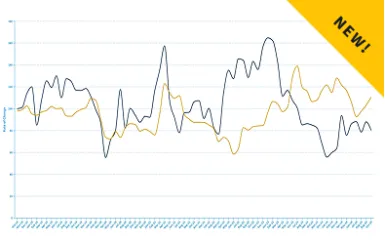How The Humble RV Became A Traveling American Dream Come True
Kyle Boreing's 2020 family vacation was all planned out at the beginning of the year.
The family’s first trip with their kids, 13-, 11- and 9-year-old boys, would bring them to Disney World, where they’d enjoy a character dinner, among other activities.
“We put down the deposit, had everything ready to go, then everything shut down,” Boreing tells Inverse. “Between March and June, we crossed our fingers and hoped to make the Disney trip. But as time went on, it was clear we weren’t going to be able to do the things we wanted, so we decided to take the refund.”
But the Boreings would still take their 2020 vacation, just not as they originally imagined it. In July, the family flew from Cincinnati to Arizona and rented a recreational vehicle (RV) to visit that state’s and Utah’s famous parks, including the Grand Canyon, Bryce Canyon, Zion National Park, Monument Valley, Capitol Reef, and the Arches.
Renting an RV “gives you an opportunity to hit the road and see things you wouldn’t see,” Boreing says. “One of the perks of an RV is we don’t have to stop to take a bio break or when someone gets hungry. We can throw something in the microwave or someone can go to the bathroom. You’re pretty much self-contained.”
The 10-day trip was the family’s first time traveling in an RV, but the Boreings were far from alone in taking an RV vacation in 2020. As the pandemic saw many flights canceled and attractions closed while people avoided crowded areas, people created their own vacations from the safety of an RV, taking advantage of the open road in the safety and comfort of a self-contained vehicle.
RV sales in 2020 beat 2019’s numbers for most months out of the year, according to the RV Industry Association. October saw the greatest number of sales of the year, at 47,326 units, compared to 38,972 in 2019, and exceeding the 2019 high of 40,243 in April of that year.
The RV industry has reason to further celebrate. According to a survey conducted in November, 61 million Americans planned to travel in an RV within the next 12 months, compared to 46 million who said the same in May. The industry also projects a nearly 20 percent boost in annual sales: 502,582 units in 2021 compared to a projected 423,628 total in 2020.
“Even before the pandemic, many people, and increasingly younger people, had been turning to RVs as a way to get out and live an active outdoor lifestyle,” says Monika Geraci, director of PR and communications at RV Industry Association. “With the onset of the pandemic, many people who were aware of RVs but maybe hadn’t ever considered RVing were now turning to them as a way to get out of the house and still have their vacations in a responsible and socially distant way.”
Many of these first-time RV users turned to Outdoorsy, an RV rental site founded in 2015. The company had its biggest year ever in 2020, seeing a 400 percent increase in bookings from the year before, according to its CMO and co-founder, Jen Young. Ninety percent of Outdoorsy’s visitors hadn’t previously traveled in an RV, camper, or travel trailer.
“It is undeniable that the factors surrounding Covid, where you have to socially distance and limit your own footprint, pushed a ton of new consumers to RVs, because it’s perfect for anyone to still travel within a pandemic,” Young says. “You can have a full-size refrigerator, running water, a bathroom, and at least a full-size bed. It’s a dream to allow people to travel with all the appliances, but you get the benefit of time spent outdoors.”
Check out the full article from Inverse here.
Please Sign in to View
Log in to view member-only content.
If you believe you are receiving this message in error contact us at memberservices@rvia.org.

